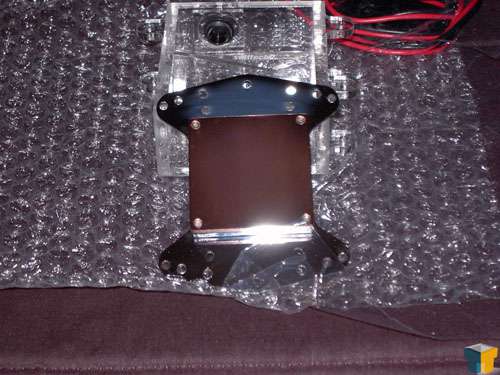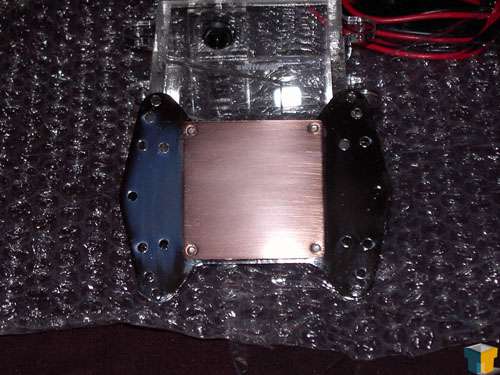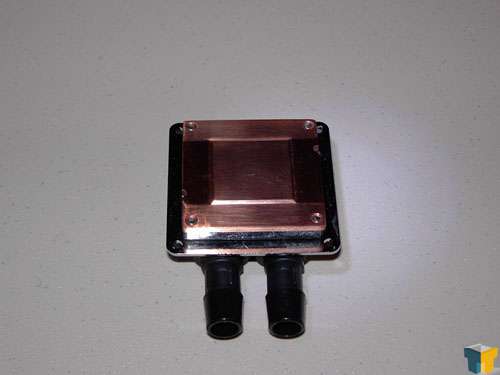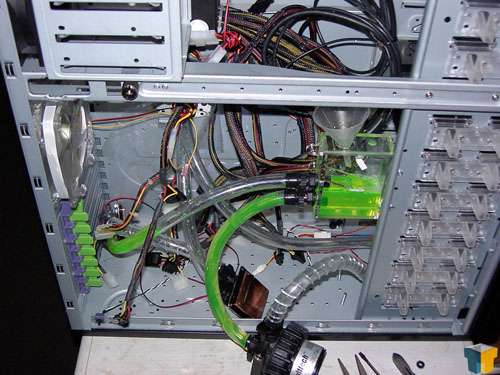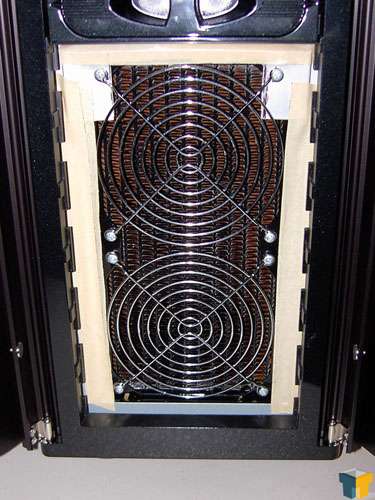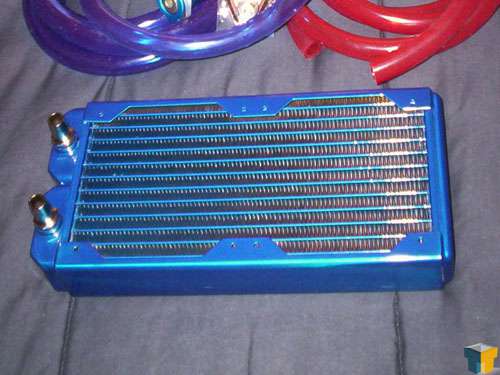- Qualcomm Launches Snapdragon 4 Gen 2 Mobile Platform
- AMD Launches Ryzen PRO 7000 Series Mobile & Desktop Platform
- Intel Launches Sleek Single-Slot Arc Pro A60 Workstation Graphics Card
- NVIDIA Announces Latest Ada Lovelace Additions: GeForce RTX 4060 Ti & RTX 4060
- Maxon Redshift With AMD Radeon GPU Rendering Support Now Available
Swiftech Apex Ultra kit and MCW60 Review
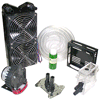
In computing we have many cooling options. Air, water and phase change being the most common in the enthusiast arena. Today we will be looking at a top grade kit from Swiftech and comparing it to a similarly configured kit from the competition and see if there is a clear winner or loser.
Page 3 – Closer Look at the Parts
As you can tell by the pictures the finish on the bottom of the blocks, while not shiny, are both very smooth. Just out of curiosity I took a straight edge to both the GPU and the CPU water blocks and both were extremely flat. If you look at the bottom of the CPU block you’ll notice that there are machine lapping marks. While the marks show up in a photograph you don’t feel them with your thumbnail whenever you run it across the surface. At least I didn’t.
After you’ve decided how and where you’re going to locate your components you have to mock up the system and fill and bleed the loop. Normally the best rule of thumb is to keep the reservoir as close to the top of the loop as possible if not at the very top. The reason for this is that during filling and bleeding of your loop it prevents gravity from playing havock with the fluid in your loop. If your reservoir is at the bottom of the loop what will happen is whenever you’re trying to fill the loop you’ll end up only being able to get a minor amount of fluid into the loop because gravity will be holding the fluid in the reservoir rather than allowing it to flow out into the loop.
If your reservoir is at or near the top of the loop when you fill the loop you can tilt the case to get the fluid to flow into the blocks, pump and radiator. Swiftech does not include that bit of wisdom in their instruction sheet. Since I’m bringing up the instruction booklet I should point out that Swiftech’s instruction manual is in large part a compendium of the individual parts instruction sheets. I have to admit that at times I found it rather confusing that the instruction manual Referencing 3/8" fittings as well as 1/2" fittings when there were no 3/8" fittings included. Now the MCW60 does include 3/8" fittings but since the tubing is 7/16" the 3/8" are just a trifle too small.
The two pictures of the radiators are to illustrate the differences between the design of each. The reason that I’m illustrating the differences between these two radiators is that I’m going to be comparing the Swiftech Apex Ultra kit against a Danger Den kit consisting of the Black Ice Extreme II, TDX, Maze 4 X 2 and D. D. D5 (Same as the Swiftech MCP655). The Danger Den kit uses 1/2" tubing rather than 7/16". Getting back to the differences in the radiators, the Black Ice Extreme II is a double row radiator design.
It also has a higher fin per inch density than the MCR220 which is what is present in the Swiftech kit. The MCR220 is a single row radiator and has been tuned with a lower density of fins per inch to take better advantage of medium to low flow fans. What this means is you will get better heat dispersion with lower flowing lower noise fans. Going by Swiftech’s performance data, if you do choose to go with a higher flowing fan you will see better thermal dispersion at the sacrifice of added noise. What this all means is that at a given CFM the Swiftech radiator will outperform the Black Ice radiator due to its lower internal losses.
|
|
Support our efforts! With ad revenue at an all-time low for written websites, we're relying more than ever on reader support to help us continue putting so much effort into this type of content. You can support us by becoming a Patron, or by using our Amazon shopping affiliate links listed through our articles. Thanks for your support!




